Phlox plants are garden favorites because their clusters of colorful blooms bring life to borders, beds, and containers from spring through summer. But even the healthiest-looking phlox can start showing signs of stress when something goes off balance.
Common phlox problems can sneak up on even the most attentive gardener. Powdery mildew, yellowing leaves, or poor blooming – these issues often appear when phlox plants don’t get the right balance of sunlight, water, and care. Don’t worry, these issues are more common than you think, and most are fixable once you understand what’s happening.
Whether you’re growing tall garden Phlox (Phlox paniculata) or low-growing creeping Phlox (Phlox subulata), these solutions will help your plants bounce back and thrive.
Table of Contents
Understanding Common Phlox Problems
Even the most vibrant Phlox plants can run into trouble now and then. These beautiful bloomers are tough, but like many perennials, they react quickly to changes in their environment. Most common phlox problems come down to a few simple things: too much moisture, not enough sunlight, or poor air circulation.
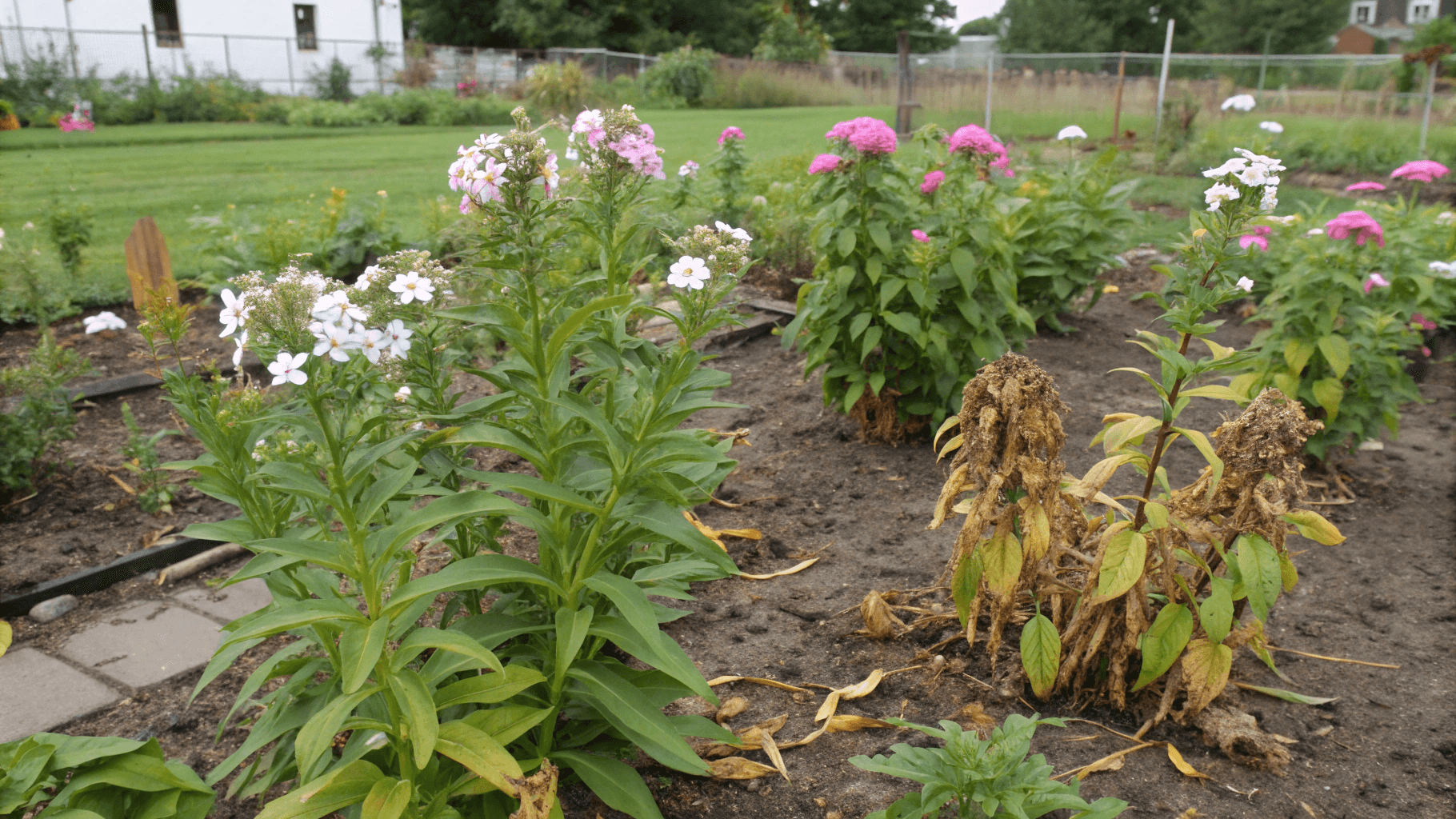
When soil stays soggy, roots can’t breathe, and that opens the door to rot or mildew. If plants grow too close together, they trap humidity the perfect setup for fungus or pests. And when phlox doesn’t get at least six hours of sunlight a day, it often responds with weak stems and fewer blooms.
1. Powdery Mildew and Fungal Issues
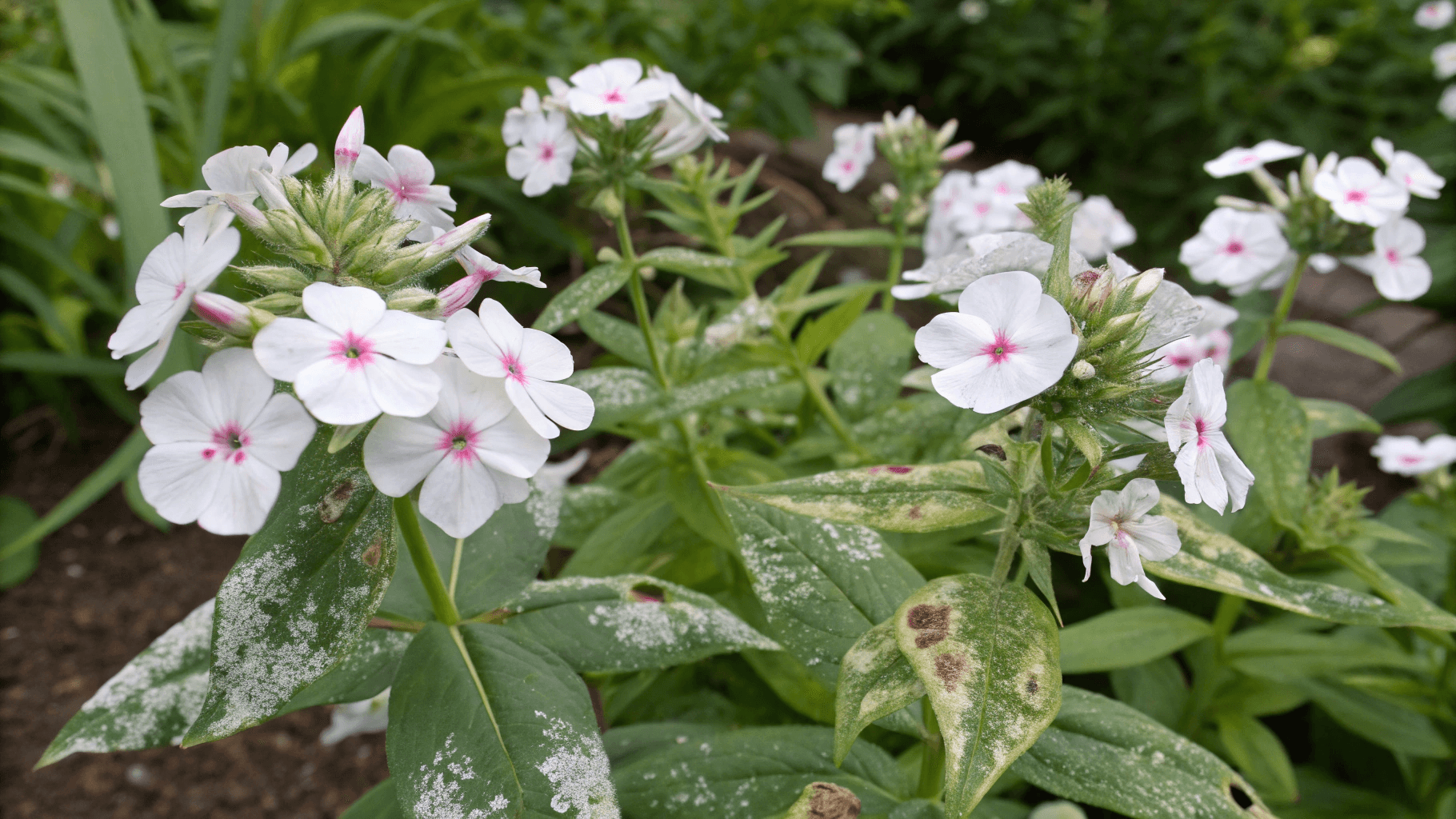
Why It Happens
If your phlox leaves develop a white, powdery coating that looks like flour dust, you’re dealing with powdery mildew the number one fungal problem for phlox. It’s caused by humidity, poor airflow, and overhead watering. The fungus thrives when nights are cool and days are warm, especially if plants are crowded.
How to Fix It Fast
- Prune for Airflow: Thin out stems so air can circulate. Avoid overcrowding space plants about 18–24 inches apart.
- Water at the Base: Always water early in the morning, directly at soil level, so leaves stay dry.
- Apply an Organic Fungicide: Mix 1 tablespoon of baking soda, ½ teaspoon of mild liquid soap, and 1 gallon of water. Spray the leaves weekly. Neem oil also works well as a preventive.
- Remove Affected Leaves: Don’t compost infected foliage. Dispose of it to stop the spread.
Preventing Future Fungus
Mulch around your phlox to reduce splashback of spores from the soil. Regularly check for early signs of mildew so you can treat it before it spreads. If you live in a humid region, choose mildew-resistant varieties like ‘David’ or ‘Jeana.’
You can explore more beautiful, disease-resistant varieties in my guide here: Phlox Varieties.
2. Poor Blooming or Leggy Growth
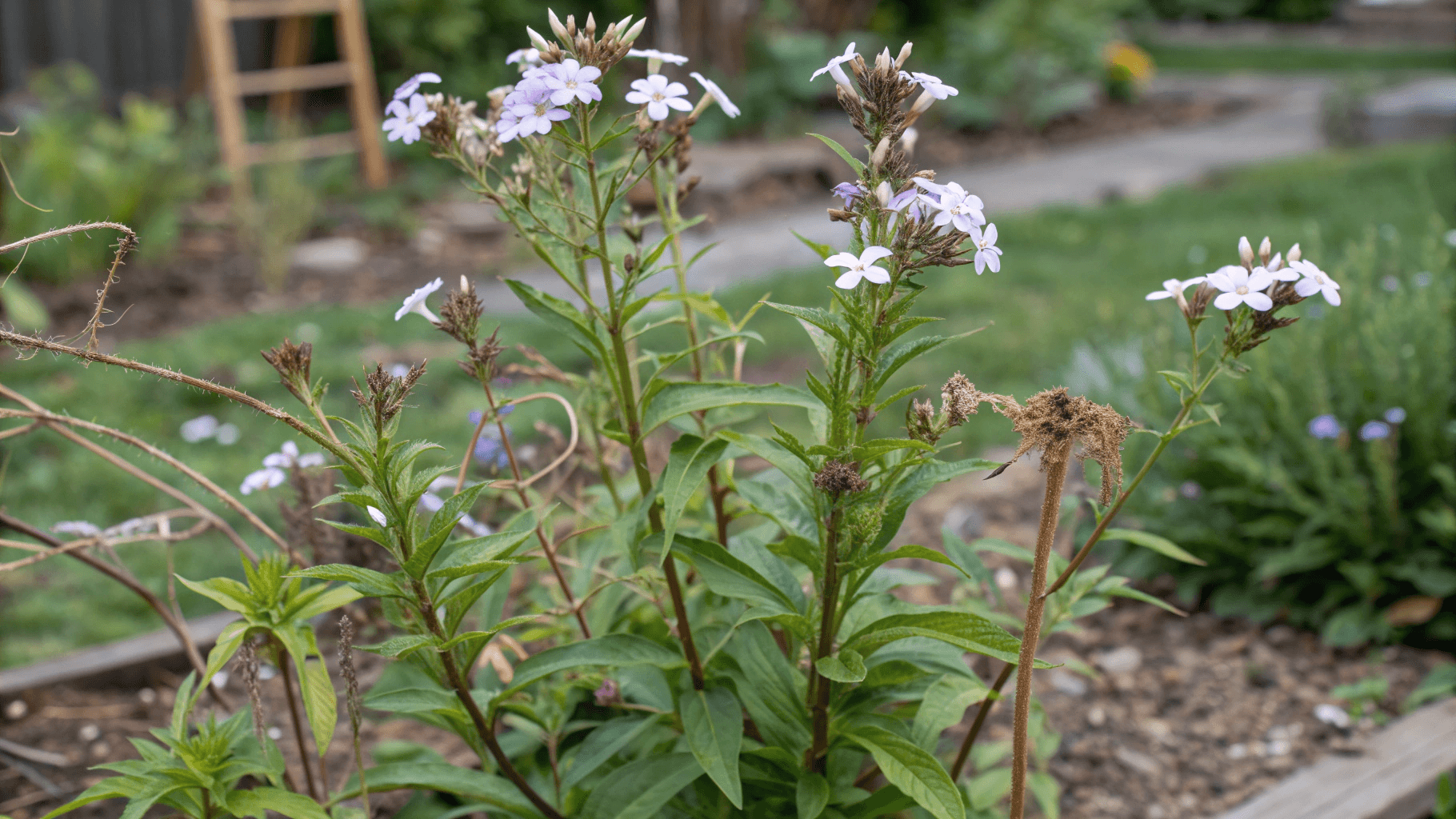
Why It Happens
When your phlox grows tall and floppy but barely blooms, it’s usually due to too little sunlight, nutrient imbalance, or lack of pruning. Phlox loves full sun at least six hours a day and needs well-fed soil to produce vibrant flowers.
How to Fix It Fast
- Sunlight Check: Move or trim back nearby plants or trees to ensure your phlox gets enough direct light.
- Feed Properly: Avoid high-nitrogen fertilizers (they encourage leafy growth at the expense of blooms). Instead, use a balanced slow-release fertilizer like 10-10-10 in early spring and again in midsummer.
- Deadhead Spent Blooms: Snipping off faded flowers encourages new growth and a longer blooming season.
- Cut Back After Blooming: Once the main flush fades, cut stems back by about one-third. This prevents legginess and promotes bushier regrowth.
TIP: Divide your phlox every 3–4 years to rejuvenate clumps. Overcrowded roots can stunt blooms and weaken plants. For step-by-step growing advice, check How to Grow Phlox.
3. Common Phlox Problems with Pests: Spider Mites, Aphids and Caterpillars
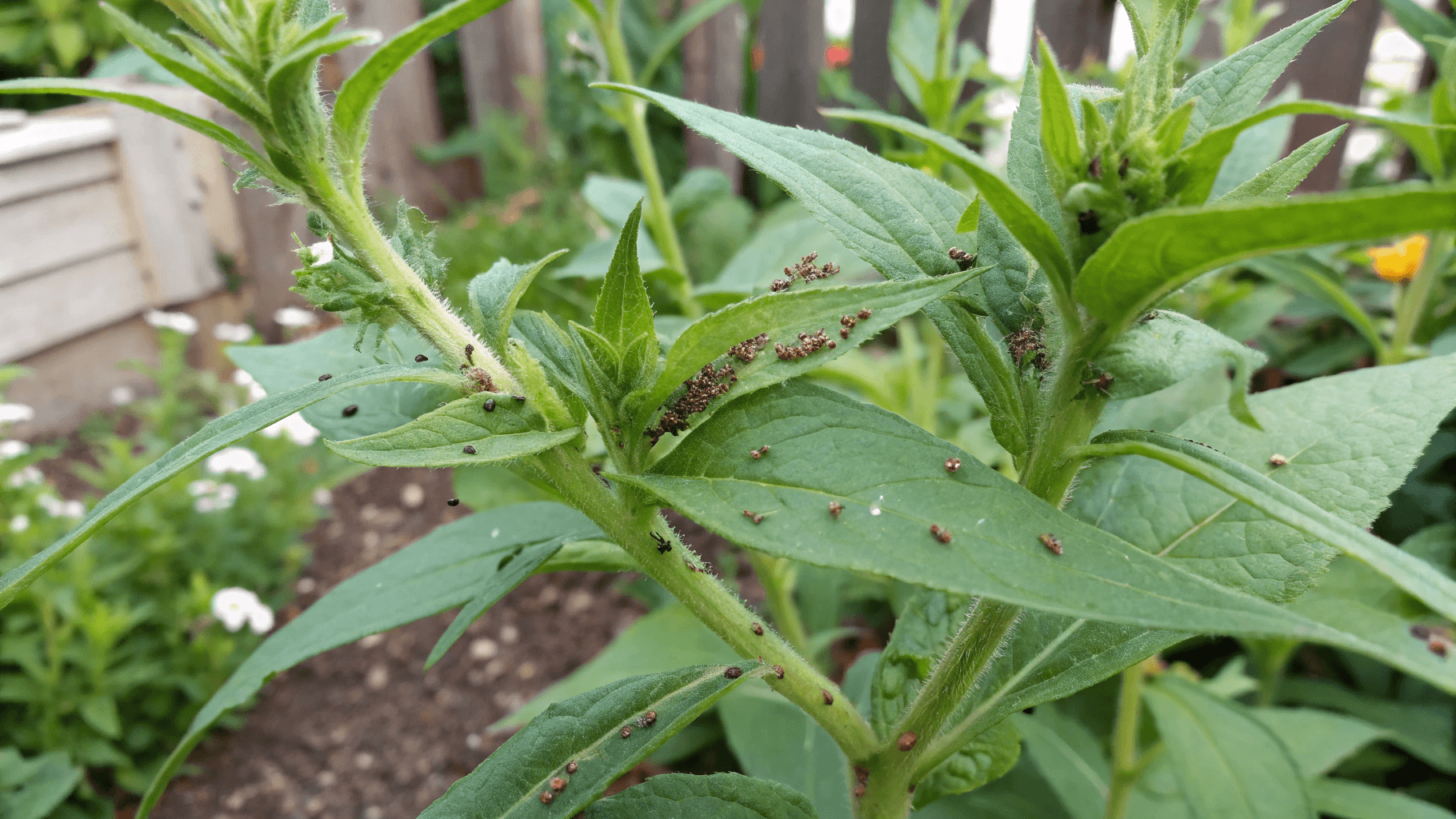
Recognizing the Signs
- Spider mites: Tiny specks that leave fine webbing and cause stippled or yellow leaves.
- Aphids: Small, soft-bodied insects that cluster on stems, sucking plant sap.
- Caterpillars: Chewed leaves or petals are a dead giveaway.
These pests not only damage leaves but can also transmit diseases like phlox virus.
How to Fix It Fast
- Blast with Water: A strong spray from the hose can remove most aphids and mites.
- Neem Oil or Insecticidal Soap: Safe, organic treatments that stop pests without harming pollinators. Spray weekly until the infestation clears.
- Invite Natural Predators: Ladybugs, lacewings, and parasitic wasps love to feed on aphids and mites. Plant nearby herbs like dill or fennel to attract them.
- Handpick Caterpillars: In small gardens, simply remove them manually.
Preventing Pest Recurrence
Healthy plants resist pests better. Keep stress low by watering deeply (not frequently) and feeding moderately. Avoid chemical pesticides, as they often kill beneficial insects and make pest problems worse long term.
4. Yellowing or Wilting Leaves
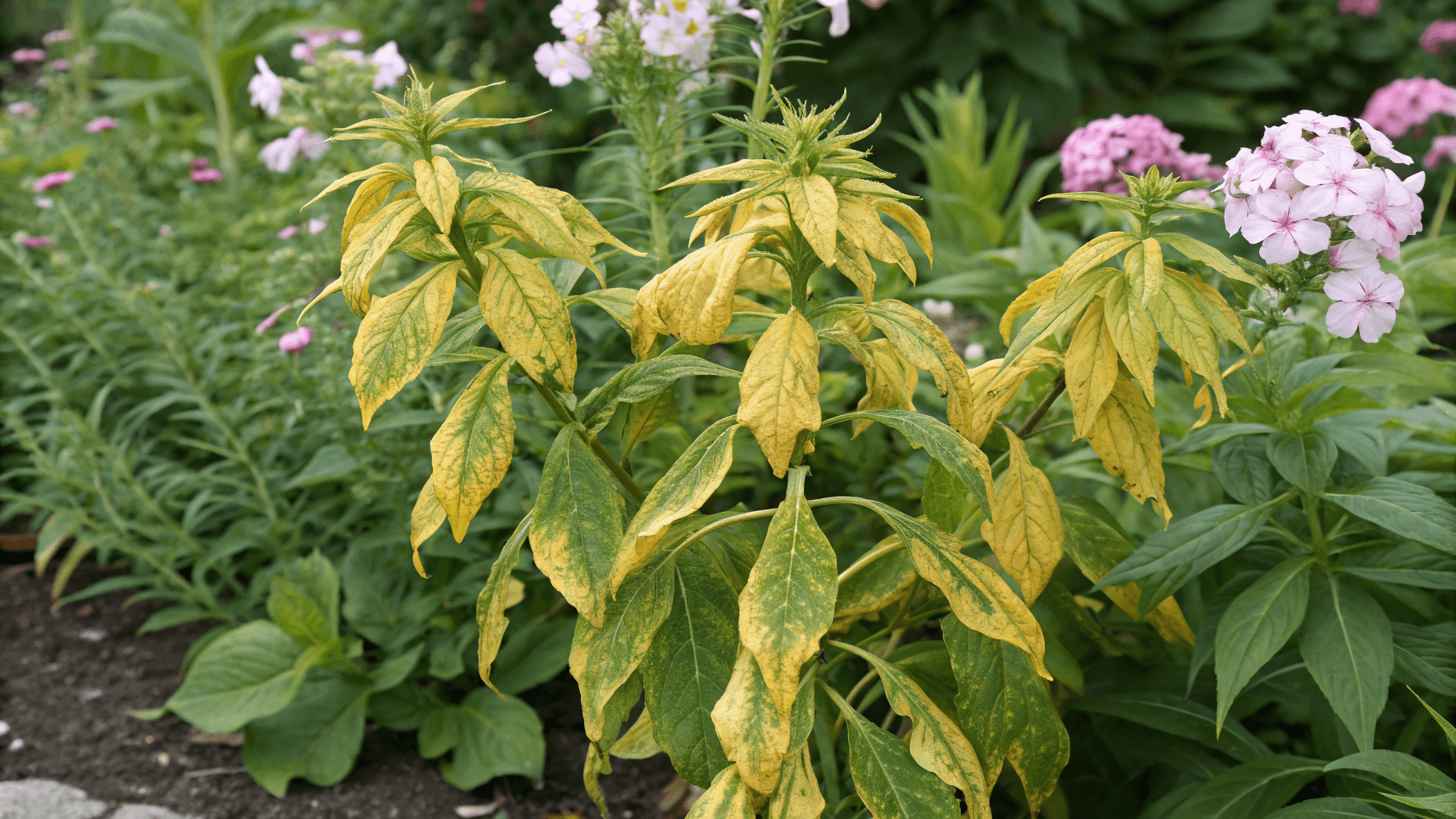
Why It Happens
When phlox leaves start to yellow or wilt, we often suspect disease, but most of the time, it’s a watering or soil issue. Overwatering suffocates roots, while underwatering dries them out. Both cause stress that shows up as droopy or discolored leaves.
How to Fix It Fast
- Check the Soil Moisture: Stick your finger an inch into the soil. If it’s soggy, let it dry out before watering again. If it’s bone dry, water deeply until the soil feels evenly moist.
- Improve Drainage: Mix in compost or perlite if your soil tends to hold water.
- Watch for Nutrient Deficiency: Yellowing from the bottom up can also mean low nitrogen. A light application of organic compost or fish emulsion can restore balance.
- Avoid Overhead Watering: Wet leaves can encourage fungal infections, especially in warm weather.
TIP: If the entire plant wilts suddenly despite moist soil, check for root rot or vole damage (see the next section).
5. Root Rot and Drainage Fixes
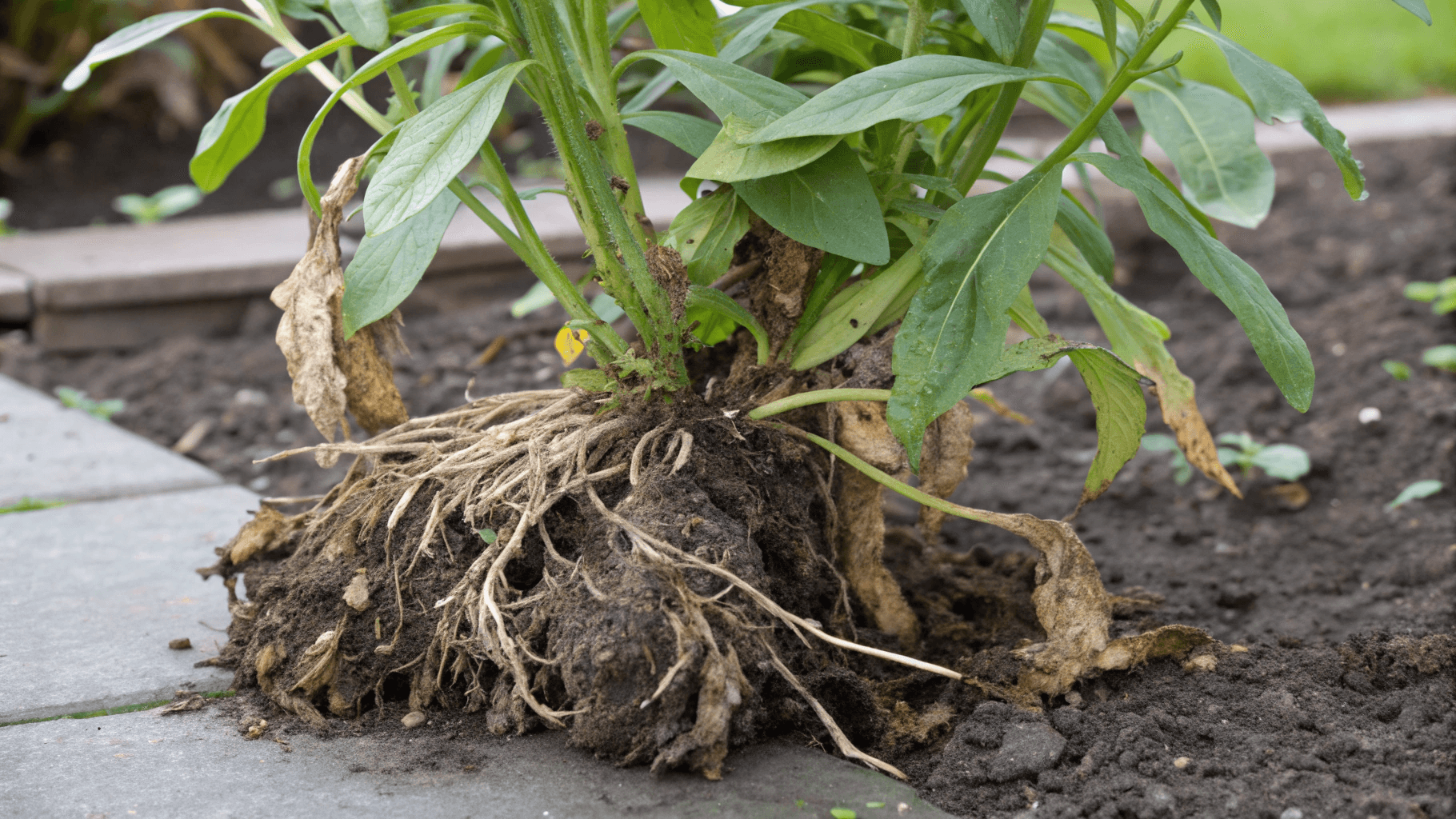
Recognizing Root Rot
Phlox suffering from root rot often looks fine one day and droopy the next. When you dig around the roots, you might find them brown, mushy, or foul-smelling instead of firm and white.
How to Fix It Fast
- Dig Up Affected Plants: Trim away the rotten roots with sterilized scissors.
- Replant in Fresh Soil: Choose a raised bed or well-draining area. Avoid clay-heavy spots where water pools.
- Amend the Soil: Mix equal parts garden soil, compost, and coarse sand for better aeration.
- Water Wisely: Give Phlox a deep soak once or twice a week, depending on the weather. Let the top few inches of soil dry between waterings.
Preventing Root Rot
Adding mulch helps regulate soil moisture, but don’t pile it against the stems, which traps humidity and invites disease. Also, resist the urge to water daily; consistent but moderate watering keeps roots strong.
Seasonal Phlox Care Routine to Avoid Future Issues
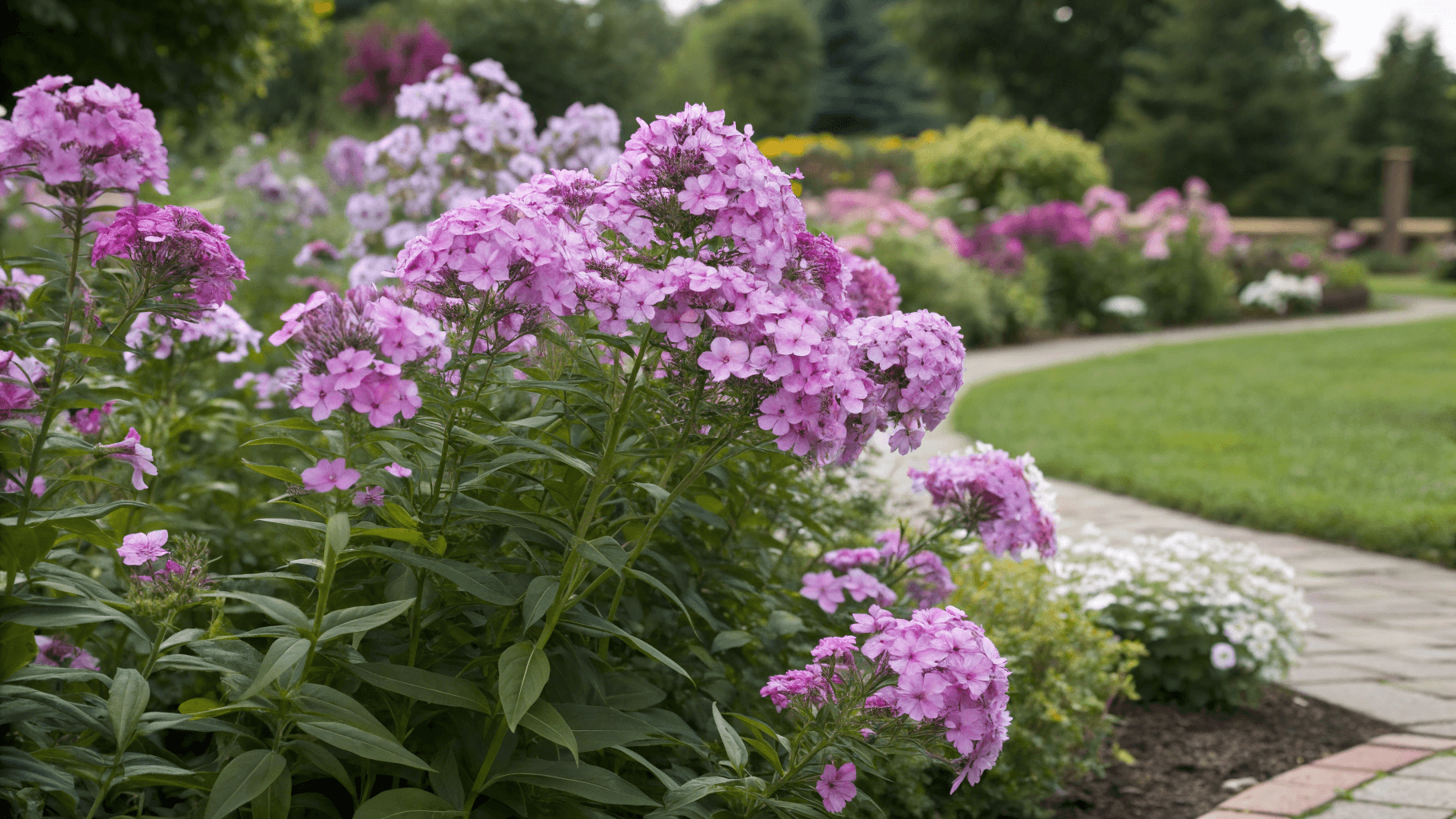
Keeping your phlox healthy year-round is about consistency, regular pruning, feeding, and preventive care makes a big difference. Here’s a simple seasonal routine:
Spring
- Divide and transplant overcrowded clumps.
- Apply a balanced, slow-release fertilizer.
- Check for overwintering pests under old mulch and clean up debris.
Summer
- Water deeply during dry spells.
- Deadhead regularly for continuous blooms.
- Watch closely for mildew or pests and treat early.
Fall
- After the final bloom, cut stems back to about 2 inches.
- Apply compost or mulch to insulate roots for winter.
- Mark varieties and colors if you plan to divide in spring.
Winter
- Keep the area tidy and free of debris.
- Avoid overwatering if your region has mild winters.
Consistent seasonal maintenance is the best long-term defense against most phlox issues. If you want to start fresh with healthy, vigorous plants next year, check out my detailed guide on How to Grow Phlox from Seed. It walks you through everything, from seed selection to transplanting, to ensure strong, disease-resistant growth.
Conclusion
Phlox might look delicate, but it’s surprisingly resilient once you understand its needs. Most common problems, from powdery mildew to yellowing leaves, come down to a few manageable factors: airflow, moisture control, sunlight, and good soil health.
By acting quickly and maintaining a simple care routine, you can revive even struggling plants and keep them blooming beautifully season after season.
The key is consistency. Give your phlox the right environment and a bit of attention, and it will reward you with vibrant color and lush, healthy growth for years to come.

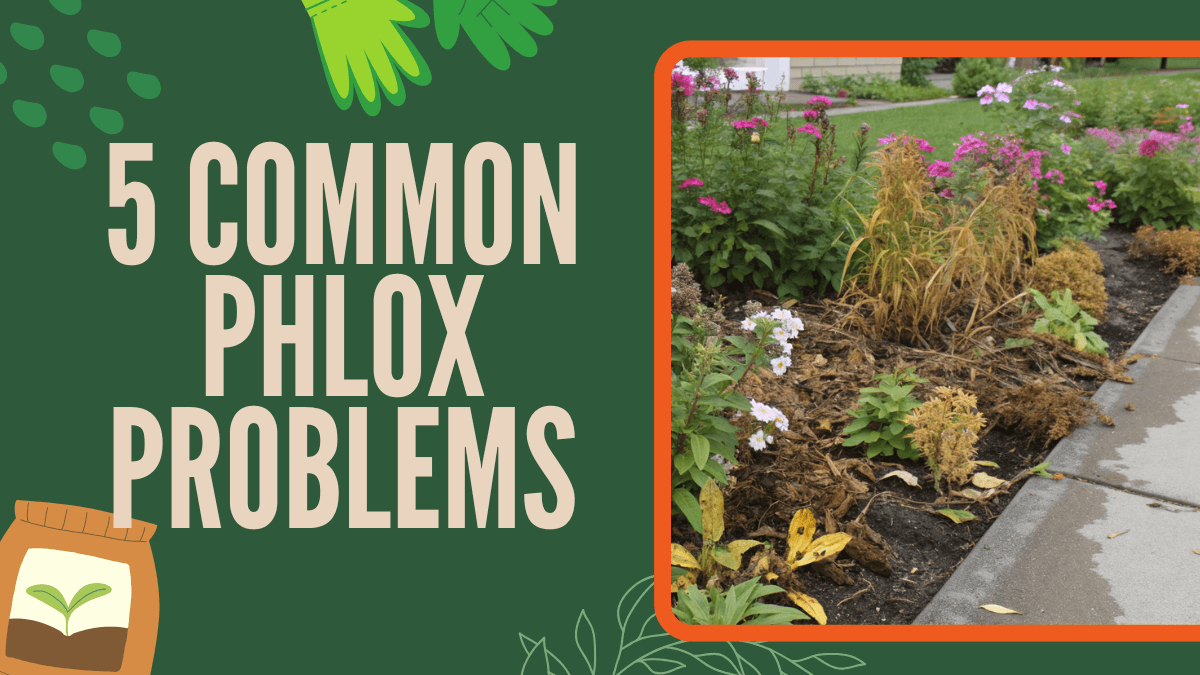
 ChatGPT
ChatGPT
 Perplexity
Perplexity
 Claude
Claude
Leave a Reply